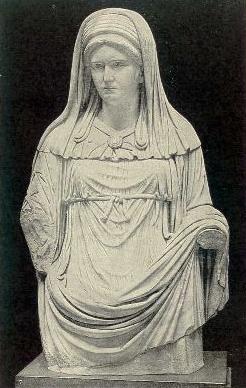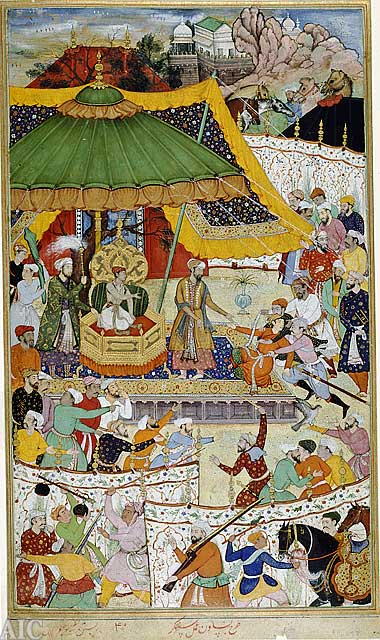|
Panchtoliya
''Panchtoliya'' was an old cotton cloth of the Mughal period. The Panchtoliya was very light in weight and used for the veil. It was weighing only 2-5 tola (one tola is 10 grams) per piece. The credit of Panchtoliya goes to the Mughal empress Nur Jahan. She was very fashion enthusiastic, encouraged, and introduced many styles and varieties of cloths of her interest. Few examples are ''Panchtoliya, badla'' (silver-threaded brocade), ''kinari'' (silver-threaded lace), and ''Dudami'' ( a flower-patterned muslin, used for gowns) weighing just two ''dams''. Nur Jahan is also credited for specific dresses. For instance, ''nurmahali'' for the wedding is one of them. Mentions Abu'l-Fazl ibn Mubarak mentioned Panchtoliya in Ain-i-Akbari with a price of 1-3 Muhr. See also * Muslin * Nur Jahan * Mughal Karkhanas Mughal ''karkhanas'' ( hi, , Karkhana, Karkana kārakhānā, Kar-kanyas, Qur khana, ur, ) were the manufacturing houses and workshops for craftsmen, established by the Mug ... [...More Info...] [...Related Items...] OR: [Wikipedia] [Google] [Baidu] |
Mughal Empire
The Mughal Empire was an early-modern empire that controlled much of South Asia between the 16th and 19th centuries. Quote: "Although the first two Timurid emperors and many of their noblemen were recent migrants to the subcontinent, the dynasty and the empire itself became indisputably Indian. The interests and futures of all concerned were in India, not in ancestral homelands in the Middle East or Central Asia. Furthermore, the Mughal empire emerged from the Indian historical experience. It was the end product of a millennium of Muslim conquest, colonization, and state-building in the Indian subcontinent." For some two hundred years, the empire stretched from the outer fringes of the Indus river basin in the west, northern Afghanistan in the northwest, and Kashmir in the north, to the highlands of present-day Assam and Bangladesh in the east, and the uplands of the Deccan Plateau in South India. Quote: "The realm so defined and governed was a vast territory of some , rang ... [...More Info...] [...Related Items...] OR: [Wikipedia] [Google] [Baidu] |
Veil
A veil is an article of clothing or hanging cloth that is intended to cover some part of the head or face, or an object of some significance. Veiling has a long history in European, Asian, and African societies. The practice has been prominent in different forms in Judaism, Christianity, and Islam. The practice of veiling is especially associated with women and sacred objects, though in some cultures, it is men, rather than women, who are expected to wear a veil. Besides its enduring religious significance, veiling continues to play a role in some modern secular contexts, such as wedding customs. Etymology The English word ''veil'' ultimately originates from Latin '' vēlum'', which also means " sail," from Proto-Indo-European ''*wegʰslom'', from the verbal root ''*wegʰ-'' "to drive, to move or ride in a vehicle" (compare ''way'' and ''wain'') and the tool/instrument suffix ''*-slo-'', because the sail makes the ship move. Compare the diminutive form ''vexillum'', and the Sla ... [...More Info...] [...Related Items...] OR: [Wikipedia] [Google] [Baidu] |
Nur Jahan
Nur Jahan, born Mehr-un-Nissa P ersian: نورجهان (; – 18 December 1645) was the wife and chief consort of the Mughal emperor Jahangir from 1620 until his death in 1627. Nur Jahan was born Mehr-un-Nissa, as the daughter of a Mirza Ghiyas Beg, who served under Jahangir's father, Emperor Akbar. Nur Jahan was the most powerful empress in the Mughal Empire. More decisive and proactive than her husband, she is considered by historians to have been the real power behind the throne for more than a decade. Nur Jahan was granted certain honours and privileges which were never enjoyed by any Mughal empress before or after like having coinage struck in her name. Jahangir's addiction to alcohol and opium made it easier for Nur Jahan to exert her influence over him and exercise power. She was granted the privilege to issue farmāns (sovereign mandates). The only other empress to command such devotion from her husband was Mumtaz Mahal, for whom the Taj Mahal was built by Emperor Sha ... [...More Info...] [...Related Items...] OR: [Wikipedia] [Google] [Baidu] |
Muslin
Muslin () is a cotton fabric of plain weave. It is made in a wide range of weights from delicate sheers to coarse sheeting. It gets its name from the city of Mosul, Iraq, where it was first manufactured. Muslin of uncommonly delicate handspun yarn was handwoven in the Bengal region of South Asia and imported into Europe for much of the 17th and early 18th centuries. In 2013, the traditional art of weaving ''Jamdani'' muslin in Bangladesh was included in the list of Masterpieces of the Oral and Intangible Heritage of Humanity by UNESCO. History In 1298 CE, Marco Polo described the cloth in his book ''The Travels''. He said it was made in Mosul, Iraq. The 16th-century English traveller Ralph Fitch lauded the muslin he saw in Sonargaon. During the 17th and 18th centuries, Mughal Empire, Mughal Bengal Subah, Bengal emerged as the foremost muslin exporter in the world, with Mughal Dhaka as capital of the worldwide muslin trade. It became highly popular in 18th-century France a ... [...More Info...] [...Related Items...] OR: [Wikipedia] [Google] [Baidu] |
Nurmahali Dress
''Nurmahali'' dress is an inexpensive wedding dress with brocade, the introduction of which has been attributed to Nur Jahan (1577–1645). She designed many dresses; the Noormahali marriage dress was one of them. The dress was for poor people, a set for bride and brides groom was priced at only 25 rupees. The dress is still in use.''In the chapter he devotes to the empress, he notes that she bestowed gifts of clothing, jewels, horses, elephants, and cash ... designed an inexpensive style of wedding dress, still used today by brides of poorer families and called a Nur Mahali.'' Empress: The Astonishing Reign of Nur Jehanbooks.google.co.in › books Ruby Lal · 2018https://www.google.co.in/books/edition/Empress/ijpnDwAAQBAJ?hl=en&gbpv=1&dq=Nurmahali+dress&pg=PT116&printsec=frontcover See also Mughal clothing Mughal clothing refers to clothing developed by the Mughals in the 16th, 17th and 18th centuries throughout the extent of their empire in the Indian subcontinent. It was ... [...More Info...] [...Related Items...] OR: [Wikipedia] [Google] [Baidu] |
Abu'l-Fazl Ibn Mubarak
Abu'l-Fazl ibn Mubarak, also known as Abul sharma, Abu'l Fadl and Abu'l-Fadl 'Allami (14 January 1551 – 22 August 1602), was the grand vizier of the Mughal emperor Akbar, from his appointment in 1579 until his death in 1602. He was the author of the ''Akbarnama'', the official history of Akbar's reign in three volumes, (the third volume is known as the '' Ain-i-Akbari'') and a Persian translation of the Bible.Abu al Fazl Biography and Works persian.packhum.org. He was also one of the Nine Jewels ( hi, script=Latn, Navaratnas) of Akbar's royal court and the brother of , the poet la ... [...More Info...] [...Related Items...] OR: [Wikipedia] [Google] [Baidu] |
Ain-i-Akbari
The ''Ain-i-Akbari'' ( fa, ) or the "Administration of Akbar", is a 16th-century detailed document recording the administration of the Mughal Empire under Emperor Akbar, written by his court historian, Abu'l Fazl in the Persian language. It forms Volume III and the final part of the much larger document, the ''Akbarnama'' (''Account of Akbar''), also by Abu'l-Fazl, and is itself in three volumes. Contents The ''Ain-i-Akbari'' is the third volume of the ''Akbarnama'' containing information on Akbar's reign in the form of administrative reports, similar to a gazetteer. In Blochmann's explanation, "it contains the 'āīn' (i.e. mode of governing) of Emperor Akbar, and is in fact the administrative report and statistical return of his government as it was about 1590."Blochmann, H. (tr.) (1927, reprint 1993). ''The Ain-I Akbari by Abu'l-Fazl Allami'', Vol. I, Calcutta: The Asiatic Society, preface (first edition) The ''Ain-i-Akbari'' is divided into five books. The first book calle ... [...More Info...] [...Related Items...] OR: [Wikipedia] [Google] [Baidu] |
Muslin
Muslin () is a cotton fabric of plain weave. It is made in a wide range of weights from delicate sheers to coarse sheeting. It gets its name from the city of Mosul, Iraq, where it was first manufactured. Muslin of uncommonly delicate handspun yarn was handwoven in the Bengal region of South Asia and imported into Europe for much of the 17th and early 18th centuries. In 2013, the traditional art of weaving ''Jamdani'' muslin in Bangladesh was included in the list of Masterpieces of the Oral and Intangible Heritage of Humanity by UNESCO. History In 1298 CE, Marco Polo described the cloth in his book ''The Travels''. He said it was made in Mosul, Iraq. The 16th-century English traveller Ralph Fitch lauded the muslin he saw in Sonargaon. During the 17th and 18th centuries, Mughal Empire, Mughal Bengal Subah, Bengal emerged as the foremost muslin exporter in the world, with Mughal Dhaka as capital of the worldwide muslin trade. It became highly popular in 18th-century France a ... [...More Info...] [...Related Items...] OR: [Wikipedia] [Google] [Baidu] |
Mughal Karkhanas
Mughal ''karkhanas'' ( hi, , Karkhana, Karkana kārakhānā, Kar-kanyas, Qur khana, ur, ) were the manufacturing houses and workshops for craftsmen, established by the Mughals in their empire. Karkhana is a Hindustani language word that means factory. These karkhanas were small manufacturing units for various arts and crafts as well as for the emperor's household and military needs. karkhanas were named and classified based on the nature of the job. For example, 'Rangkhana' and 'Chhapakhana' were for textile dyeing and printing work. The term 'tushak-khana' was used to describe workshops that made shawls and embellished them with embroidery or needlework. Imperial or Royal Karkhanas were for luxury goods and weapons. The karkhanas were the place for various production activities and also for the exploration of new techniques and innovations. Some operations such as weaving, embroidery work, and brocade work were often done under one roof, resembling an integrated assembly line. ... [...More Info...] [...Related Items...] OR: [Wikipedia] [Google] [Baidu] |
Cotton
Cotton is a soft, fluffy staple fiber that grows in a boll, or protective case, around the seeds of the cotton plants of the genus ''Gossypium'' in the mallow family Malvaceae. The fiber is almost pure cellulose, and can contain minor percentages of waxes, fats, pectins, and water. Under natural conditions, the cotton bolls will increase the dispersal of the seeds. The plant is a shrub native to tropical and subtropical regions around the world, including the Americas, Africa, Egypt and India. The greatest diversity of wild cotton species is found in Mexico, followed by Australia and Africa. Cotton was independently domesticated in the Old and New Worlds. The fiber is most often spun into yarn or thread and used to make a soft, breathable, and durable textile. The use of cotton for fabric is known to date to prehistoric times; fragments of cotton fabric dated to the fifth millennium BC have been found in the Indus Valley civilization, as well as fabric remnants dated back ... [...More Info...] [...Related Items...] OR: [Wikipedia] [Google] [Baidu] |








